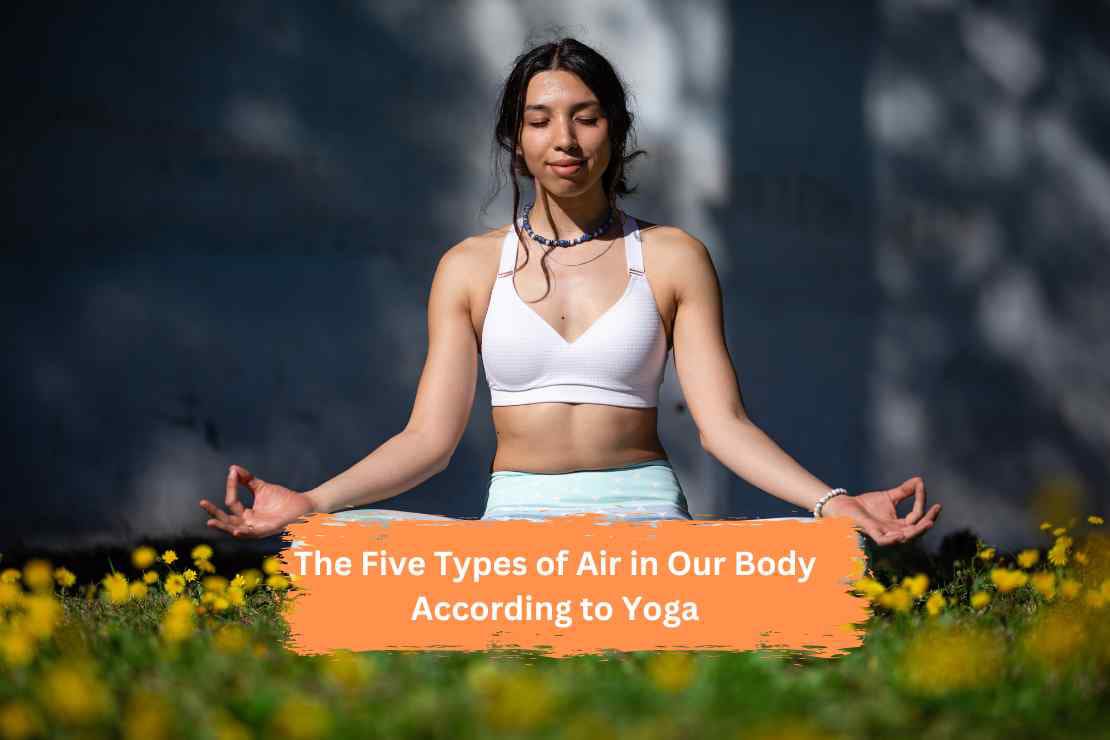
In the ancient science of yoga, the human body is believed to be governed by five vital airs, or “Prana Vayus.” These energies regulate bodily functions, ensuring balance, vitality, and overall health. The concept of the five types of air in our body according to yoga is deeply rooted in yogic philosophy, emphasizing how these energies flow through the body and influence our well-being. Understanding these vayus allows us to harness their power for better health, mindfulness, and spiritual growth. In this article, we will explore the types of air in our body, their functions, and how we can enhance their balance through yogic practices. Whether you are a seasoned practitioner or new to yoga, this knowledge can transform your life.
What Are the Five Types of Air in Our Body According to Yoga?
Yoga identifies five types of pranic energy that govern different physiological and mental functions. These are:
- Prana Vayu – Responsible for respiration and energy intake.
- Apana Vayu – Governs elimination and downward movement.
- Samana Vayu – Controls digestion and assimilation.
- Udana Vayu – Associated with speech, growth, and upward movement.
- Vyana Vayu – Distributes energy throughout the body.
Understanding these types of air in our body can help us achieve balance and better health through yoga and pranayama practices.
How Does Prana Vayu Function in the Body?
Prana Vayu is the primary force that governs life energy. It is centered around the chest and controls respiration, heart function, and the absorption of air and nourishment.
- Location and Role: Prana Vayu is mainly located in the chest and is responsible for respiration and the intake of life-sustaining energy. It governs the lungs, heart, and diaphragm.
- Breathing and Energy Intake: This Vayu is activated through deep and conscious breathing, ensuring the efficient exchange of oxygen and carbon dioxide in the lungs.
- Impact on Mental Health: A well-functioning Prana Vayu results in mental clarity, alertness, and heightened awareness. When disrupted, it can lead to anxiety, shortness of breath, and fatigue.
- Balancing Techniques: Practices like deep breathing, pranayama, and heart-opening yoga poses such as Bhujangasana (Cobra Pose) and Ustrasana (Camel Pose) help strengthen Prana Vayu.
What Role Does Apana Vayu Play?
Apana Vayu governs all downward movements in the body, especially related to elimination and detoxification.
- Location and Role: Situated in the lower abdomen, Apana Vayu is responsible for elimination processes such as urination, defecation, menstruation, and childbirth.
- Detoxification: It supports the removal of waste and toxins from the body, ensuring overall health and internal cleanliness.
- Grounding Energy: Apana Vayu helps in stabilizing emotions and keeping a person mentally and physically grounded.
- Signs of Imbalance: An unbalanced Apana Vayu can result in constipation, digestive issues, reproductive disorders, and lack of stability in life.
- Balancing Techniques: Root-focused yoga poses such as Malasana (Garland Pose) and Mula Bandha (Root Lock) aid in strengthening Apana Vayu.
How Does Samana Vayu Influence Digestion?
Samana Vayu is centered around the navel and plays a key role in digestion and nutrient absorption.
- Location and Role: Found in the stomach and digestive organs, Samana Vayu balances the digestive fire (Agni) and ensures proper metabolism.
- Digestion and Assimilation: It aids in the breakdown of food, absorption of nutrients, and distribution of energy to the body.
- Signs of Imbalance: Poor digestion, bloating, irregular appetite, and issues like acid reflux indicate an imbalance in Samana Vayu.
- Balancing Techniques: Core-strengthening yoga poses such as Navasana (Boat Pose), and pranayama techniques like Kapalabhati (Skull Shining Breath) help in regulating this Vayu.
What Is the Function of Udana Vayu?
Udana Vayu is associated with speech, self-expression, and upward movement of energy.
- Location and Role: It is mainly situated in the throat and head region and governs verbal communication, cognitive functions, and spiritual growth.
- Speech and Expression: Udana Vayu influences voice modulation, clarity of speech, and the ability to express emotions effectively.
- Spiritual Growth: It plays a significant role in personal development and enlightenment, helping individuals connect with their higher selves.
- Signs of Imbalance: Throat infections, communication issues, lack of motivation, and weak memory may indicate an imbalance in Udana Vayu.
- Balancing Techniques: Chanting, practicing Jalandhara Bandha (Throat Lock), and throat-stimulating yoga poses such as Sarvangasana (Shoulder Stand) enhance Udana Vayu.
How Does Vyana Vayu Support the Entire Body?
Vyana Vayu acts as a circulatory force, ensuring that energy and nutrients are distributed evenly throughout the body.
- Location and Role: Present throughout the entire body, Vyana Vayu is responsible for circulation, coordination, and overall movement.
- Blood Circulation and Nervous System: It ensures proper blood flow and maintains the functionality of the nervous system.
- Physical Agility: A well-balanced Vyana Vayu results in flexibility, strength, and stamina, allowing for efficient bodily movements.
- Signs of Imbalance: Poor circulation, muscle stiffness, and lack of coordination may indicate disturbances in Vyana Vayu.
- Balancing Techniques: Whole-body movements, dynamic yoga sequences like Surya Namaskar (Sun Salutation), and meditation support Vyana Vayu.
How Can You Balance the Five Types of Air in Our Body?
To ensure the harmonious flow of prana in the body, yogic practices such as pranayama, asanas, and meditation are essential.
- Pranayama: Breathing techniques like Nadi Shodhana (Alternate Nostril Breathing), Bhastrika (Bellows Breath), and Ujjayi (Ocean Breath) regulate these energies.
- Yoga Asanas: Poses like Tadasana (Mountain Pose), Paschimottanasana (Seated Forward Bend), and Sarvangasana (Shoulder Stand) stimulate different vayus.
- Meditation and Mudras: Techniques like Jnana Mudra and chanting Om can help balance pranic energy.
Conclusion
The five types of air in our body according to yoga play a crucial role in our overall well-being. These pranic forces regulate physical, mental, and emotional health, making them essential for a balanced life. By understanding and harmonizing Prana Vayu, Apana Vayu, Samana Vayu, Udana Vayu, and Vyana Vayu through yoga and pranayama, we can achieve greater vitality, clarity, and inner peace. Incorporating these practices into daily life can lead to better health and a deeper connection with oneself. Start your journey today and experience the benefits of a balanced pranic flow.
FAQs
1. What are the five types of air in our body according to yoga?
The five types of air in our body are Prana Vayu, Apana Vayu, Samana Vayu, Udana Vayu, and Vyana Vayu, each governing essential physiological functions.
2. How do these five vayus impact our health?
These vayus regulate respiration, elimination, digestion, circulation, and communication, ensuring overall physical and mental well-being.
3. Can yoga help balance the five types of air in our body?
Yes, practicing pranayama, yoga postures, and meditation can effectively regulate and harmonize these pranic energies.
4. What happens if any of the five vayus become imbalanced?
Imbalances can lead to health issues such as digestive disorders, respiratory problems, poor circulation, speech issues, and emotional instability.
5. Which yoga practices help balance these pranic energies?
Breathing techniques like Nadi Shodhana, asanas like Sarvangasana, and meditation help balance these energies and promote overall wellness.
6. How can I incorporate knowledge of these vayus into daily life?
By practicing mindful breathing, engaging in yoga, and maintaining a balanced lifestyle, you can harmonize these energies and improve overall health and awareness.





